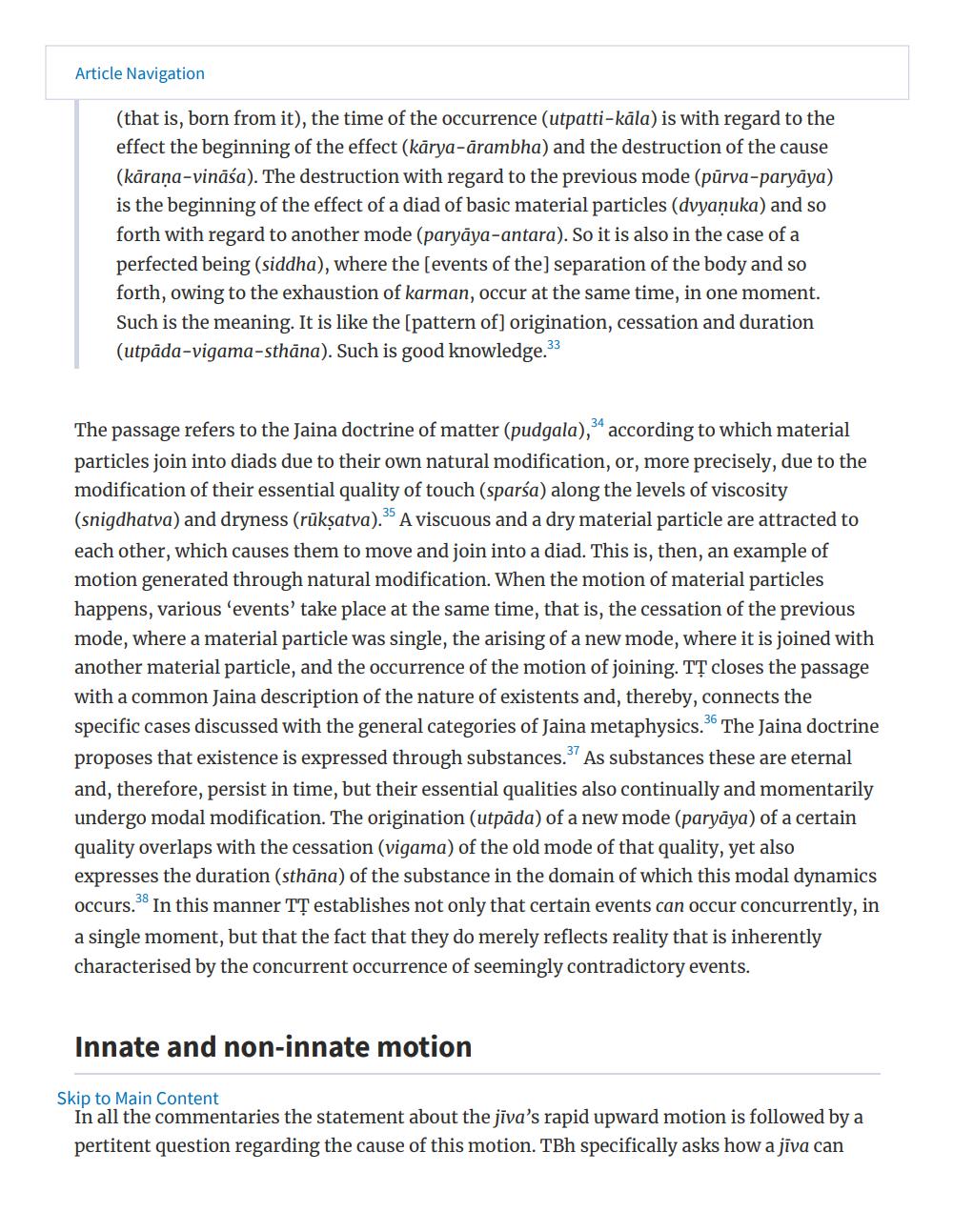Book Title: Jaina Philosophers On Nature Of Liberation Author(s): Publisher: Unknown View full book textPage 6
________________ Article Navigation (that is, born from it), the time of the occurrence (utpatti-kāla) is with regard to the effect the beginning of the effect (kārya-ārambha) and the destruction of the cause (kāraṇa-vināśa). The destruction with regard to the previous mode (pūrva-paryāya) is the beginning of the effect of a diad of basic material particles (dvyaņuka) and so forth with regard to another mode (paryāya-antara). So it is also in the case of a perfected being (siddha), where the sevents of the separation of the body and so forth, owing to the exhaustion of karman, occur at the same time, in one moment. Such is the meaning. It is like the (pattern of) origination, cessation and duration (utpäda-vigama-sthāna). Such is good knowledge.33 The passage refers to the Jaina doctrine of matter (pudgala), 34 according to which material particles join into diads due to their own natural modification, or, more precisely, due to the modification of their essential quality of touch (sparśa) along the levels of viscosity (snigdhatva) and dryness (rūkşatva). A viscuous and a dry material particle are attracted to each other, which causes them to move and join into a diad. This is, then, an example of motion generated through natural modification. When the motion of material particles happens, various events' take place at the same time, that is, the cessation of the previous mode, where a material particle was single, the arising of a new mode, where it is joined with another material particle, and the occurrence of the motion of joining. TȚ closes the passage with a common Jaina description of the nature of existents and, thereby, connects the specific cases discussed with the general categories of Jaina metaphysics. The Jaina doctrine proposes that existence is expressed through substances. As substances these are eternal and, therefore, persist in time, but their essential qualities also continually and momentarily undergo modal modification. The origination (utpada) of a new mode (paryāya) of a certain quality overlaps with the cessation (vigama) of the old mode of that quality, yet also expresses the duration (sthāna) of the substance in the domain of which this modal dynamics occurs. In this manner TȚ establishes not only that certain events can occur concurrently, in a single moment, but that the fact that they do merely reflects reality that is inherently characterised by the concurrent occurrence of seemingly contradictory events. Innate and non-innate motion Skip to Main Content In all the commentaries the statement about the jiva's rapid upward motion is followed by a pertitent question regarding the cause of this motion. TBh specifically asks how a jīva canPage Navigation
1 ... 4 5 6 7 8 9 10 11 12 13 14 15 16 17 18 19 20 21 22 23 24 25 26 27 28 29
